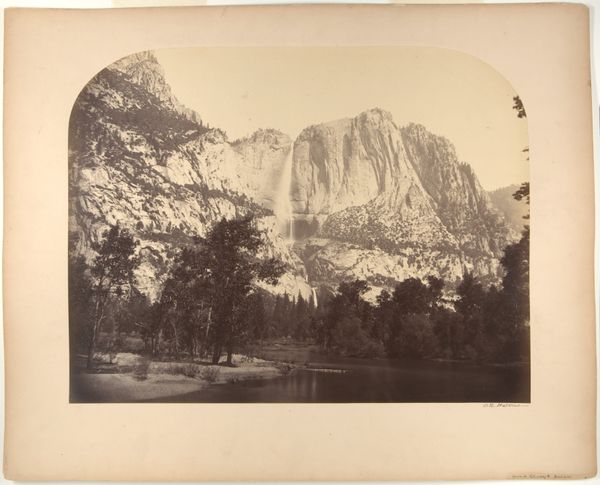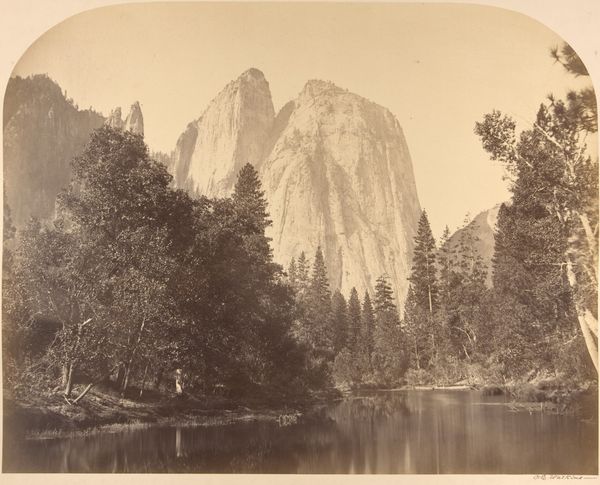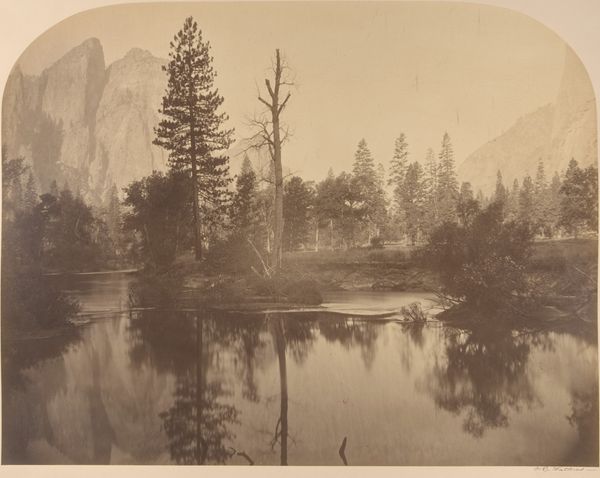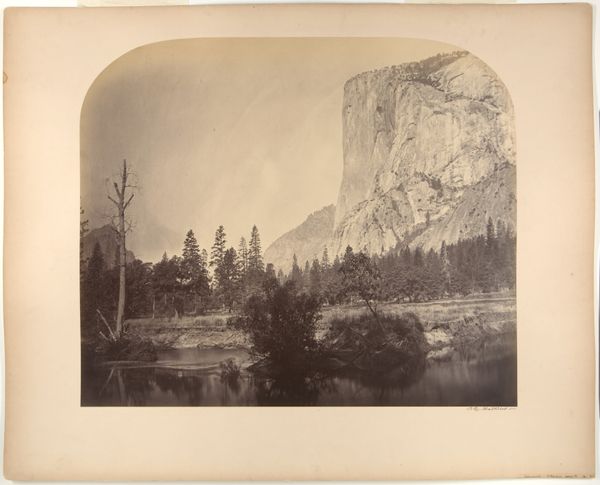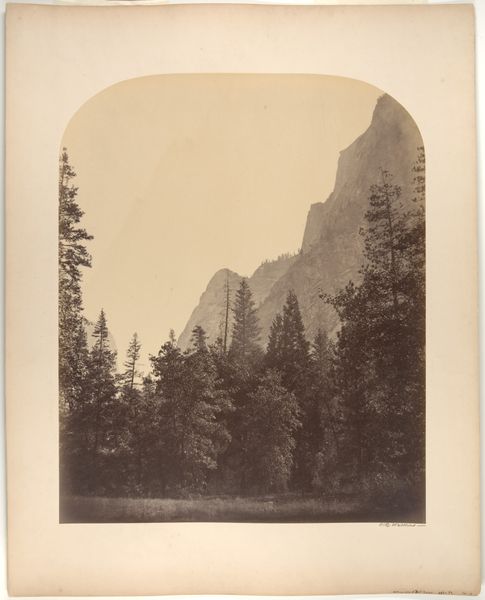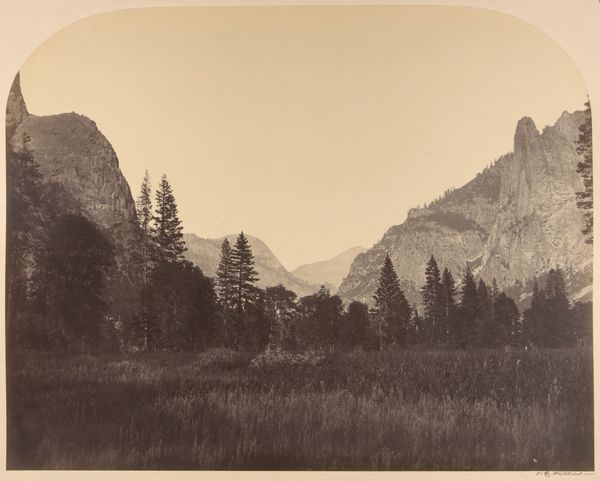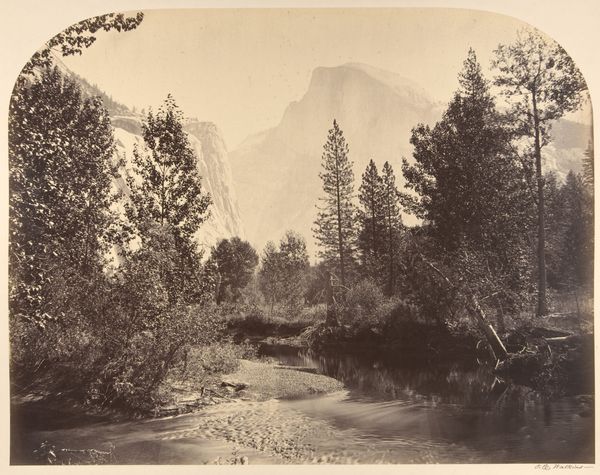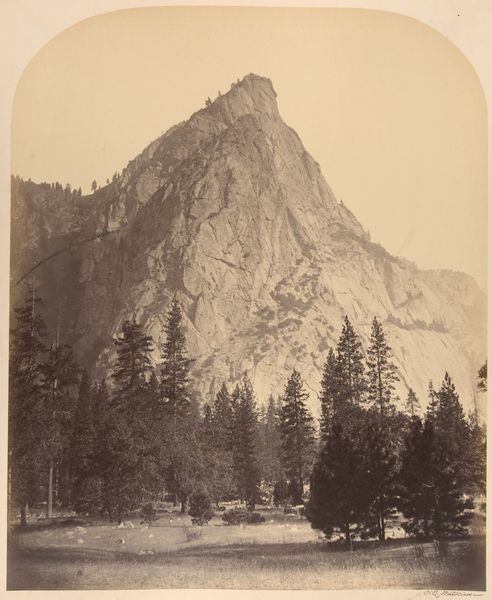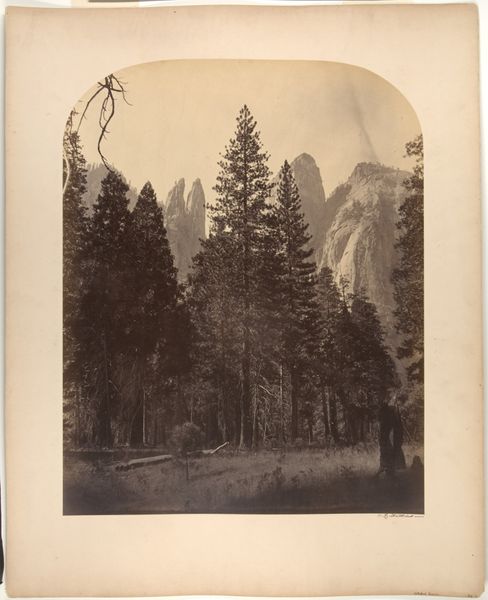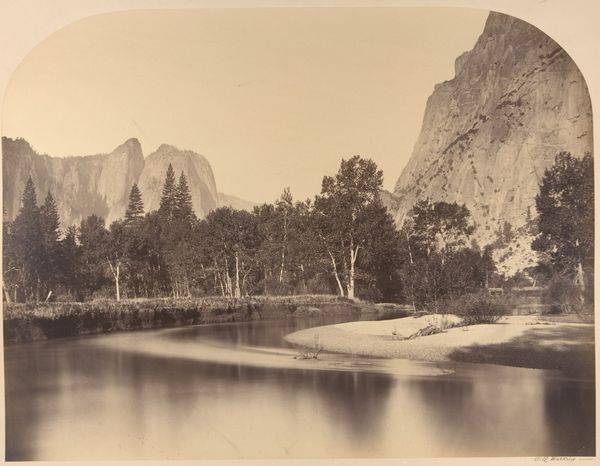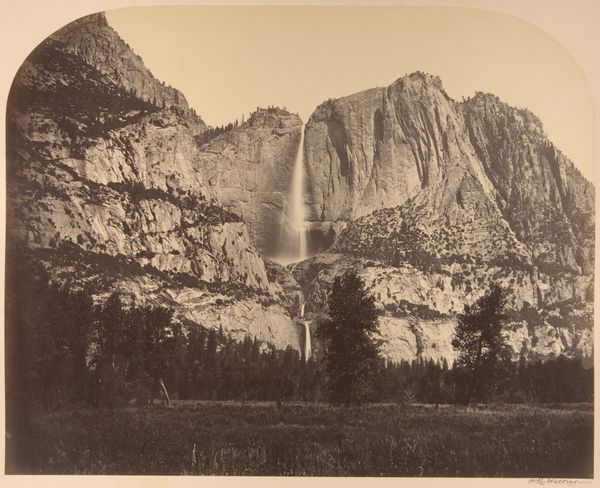
Dimensions: Image: 42.4 x 52.2; Mount: 53.7 x 69.3
Copyright: Public Domain
Editor: Here we have Carleton Watkins' "Pompomasos (Leaping Frogs), Three Brothers," a gelatin silver print from 1861. The mountains loom so large in the background, their reflection creating almost perfect symmetry in the water. What stories do you see woven into this landscape? Curator: Watkins' Yosemite photographs are more than scenic views; they are strategic documents. This image, produced around the time of the Civil War, helped shape the American identity. Think about it: monumental landscapes fueled a sense of national pride and promoted westward expansion. Editor: So, it's less about pure art and more about nation-building? Curator: Exactly! These images played a crucial role in convincing Congress to protect Yosemite as a national park in 1864. It was the height of Manifest Destiny. Consider the public role of these grand landscapes, which visually justified westward expansion and positioned America as a promised land. Watkins was capturing something much larger than scenery. Editor: So the "sublime" feeling is intentional propaganda almost? To create a sense of national identity, a new 'America'? Curator: One could argue so. What happens when something natural is turned into political and ideological fodder? It's worth pondering the ethical dimensions of landscape photography, particularly when viewing these serene images. Editor: I never considered the photograph as a persuasive argument. This perspective is really enlightening! Curator: Thinking about Watkins' work through the lens of its historical reception offers a fresh understanding. These are complex documents embedded in the political currents of their time.
Comments
No comments
Be the first to comment and join the conversation on the ultimate creative platform.
